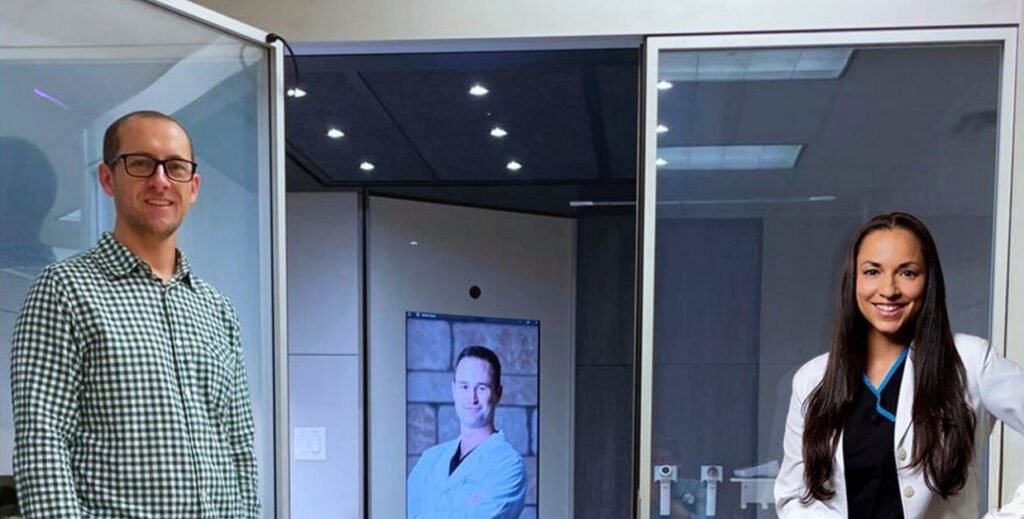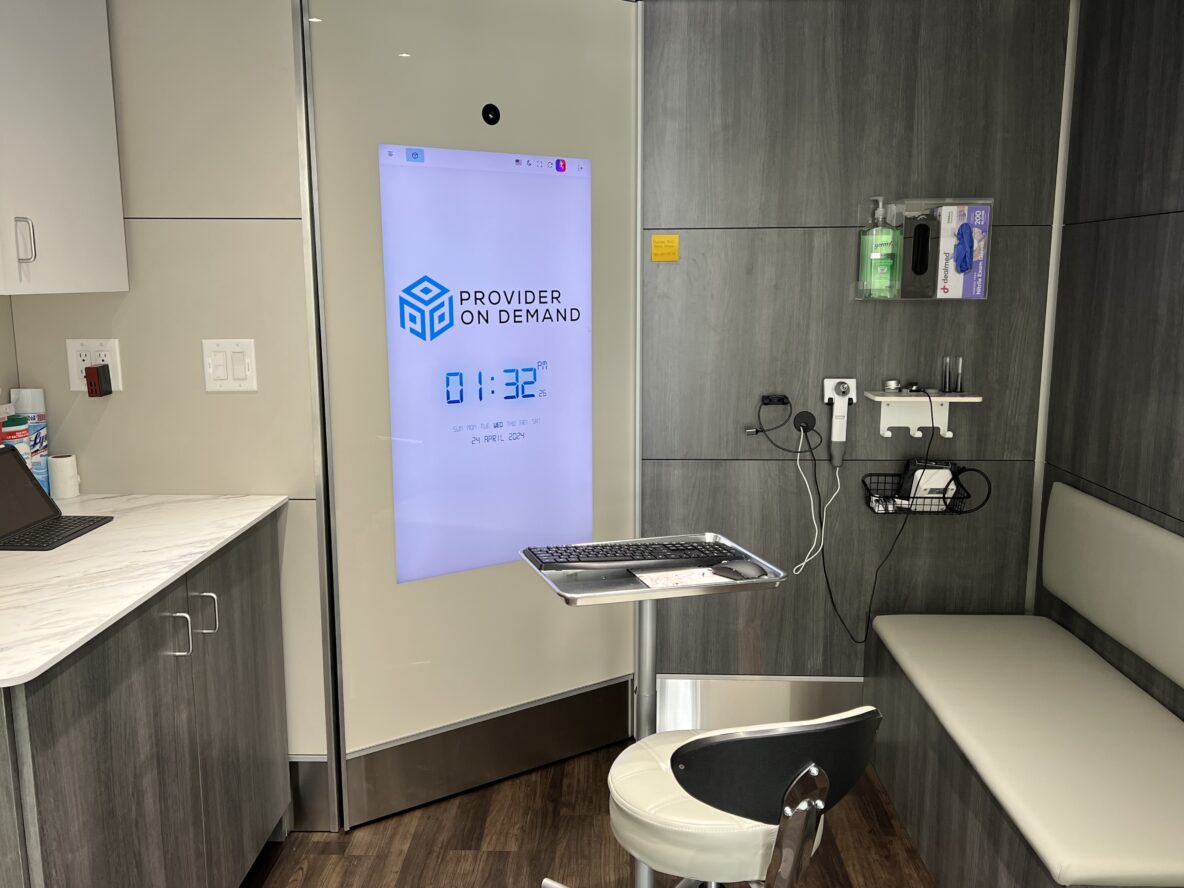Tenant Spotlight: Provider On Demand
“Provider on Demand began with a handful of emergency physicians who were feeling let down by the healthcare system.” -Marlene Morales, MD
Can you share the origin story of your concept?
Provider on Demand began with a handful of emergency physicians who were feeling let down by the healthcare system. Working through the COVID pandemic pushed many doctors to the breaking point and left patients feeling like they were unable to get the care they needed. I think we all looked around and felt that surely there had to be a better way for people to access care. Something had to be done and our team embraced the challenge. By making healthcare more accessible, affordable, and by eliminating the standard roadblocks, such as wait times, appointment scheduling, surprise billing and all the negative stigma associated with it, POD was born.
What motivated you to purchase/build this brand, and how did you go about building it from the ground up?
When you step back and assess a lot of the things we see as normal in our healthcare system, you find that we have unfortunately been forced to normalize things that would be unacceptable in any other industry. Waiting weeks or months for an appointment, being kept in the dark about types of services and their costs– these create a serious lack of control and sense of helplessness in the space. The more we peeled back these industry norms the more we have become motivated to create something better. We want to introduce the world to this game changing, tech-forward way of accessing care. We believe this is what healthcare should look like in the 21st century.

Brett Marvel, MD and Marlene Morales, MD in front of a POD.
Have there been any specific challenges you faced during the initial stages, and how do you plan to overcome them to establish a successful brand?
Healthcare has a deep seeded culture to it, from both the provider side and the patient side. Meaning that both sides are often reticent and intimidated by significant change. We find that patients are frustrated by the current system but somewhat fatalistic about having any alternative. Overcoming that momentum can be challenging, but once people experience the POD, their feedback has been phenomenal.
Can you highlight key milestones or turning points that have shaped the growth and identity of your concept?
Signing our first corporate contrast was a huge milestone. The response from the employees who visited POD was so positive that the employer signed a three-year contract after the initial trial period. This gave us proof-of-concept and validated our ideas about patient experiences and value to employers. It also allowed us to not only better understand the needs of our patients, but to begin to think long term about the kinds of services we can provide with POD.
Expansion Plans and Criteria:
Could you discuss your expansion plans for the future? What regions or markets are you targeting, and what factors influence your decision to expand in specific areas?
We are really focused on the Texas Triangle in the next 24 months, continuing to engage private businesses and corporate partners, while also opening locations with direct to consumer models.
The Texas economy is strong, the primary care population statistics show a significant need, and the Texan ethos of individual freedom and independence align well with our model of healthcare that puts the patient in charge.
Do you have flexibility in purchasing larger tracts, building small centers, and using pad sites for your concept? Can you elaborate on how this approach aligns with your expansion strategy?
Flexibility is one of the greatest attributes of our product. We have taken the clinic experience and duplicated it in a 100sqft foot print. We can be installed on corporate campuses to add to their benefit package. We can be a traditional tenant in small hard to rent lease sites. We can partner with other companies to sublet space and thereby increase their penetrance into a new customer demographic.
How do you balance the preference for purchasing properties with your willingness to engage in lease deals with other desirable tenants? What criteria guide your decision-making process in such situations?
Being a growth stage start up we look to maximally leverage our capital for expansion and in doing so leasing is the best option for us at this time. As we grow this approach will likely shift.

In what ways do you ensure that your brand maintains a consistent identity and customer experience across various locations, especially considering the diverse types of properties you operate in?
Although the host location can vary greatly, the actual product, the POD, is uniform. Whether you are in Puerto Rico or in San Antonio, the POD experience is largely unchanged.
Community Programs and Initiatives:
You mentioned your involvement in several community programs. Could you share more about these initiatives and how they reflect your brand’s values and commitment to the communities you serve?
Rural health is a major issue in our healthcare system. Rural hospitals are struggling to remain financially viable with the traditional healthcare models of the past 100 years. Our product will play a major role in increasing access to care for those in rural areas as well as increasing the reach of providers who don’t live in those rural locales.
What impact have your community programs had on the local areas where your concept operates? Are there any specific success stories or memorable moments you’d like to share?
We have a location where people save on average 3 hours in travel per trip to the POD. This increases their likelihood to receive and participate in preventative care. This thereby decreases the likelihood of preventable catastrophic outcomes. Diabetics are better managed, hypertension is better controlled, stroke and heart attack risks go down. Secondly, we have significantly reduced the cost to access a Provider. There are no hidden fees or surprise bills. The transparency is a breath of fresh air.
How do you integrate community engagement into your overall business strategy?
We try to be very engaged with the community. The more we can normalize wellness and seeking care the more that those who are resistant to seeking it might consider doing so. Sponsoring events at schools, daycares, doing free safety talks on disease and injury, are just a few examples.
Looking ahead, what do you envision for the future of your concept, both in terms of expansion and community involvement?
I believe our product will decentralize the primary care concept. We will also remove the fabricated delineation of primary care and urgent care. We will deliver broad spectrum care that you can coordinate with your natural life patterns. Patients will be able to see their PCP while grabbing groceries or even out of town; they will be in charge. We hope to make the feelings of helplessness and lack of agency experienced in today’s care system a distant memory.


